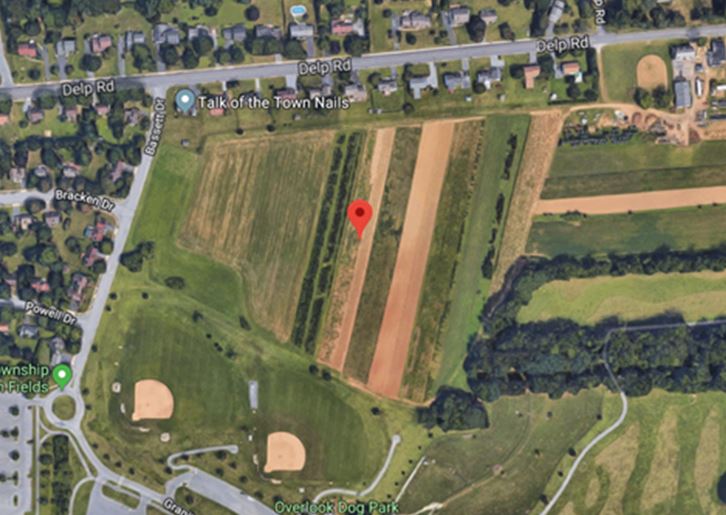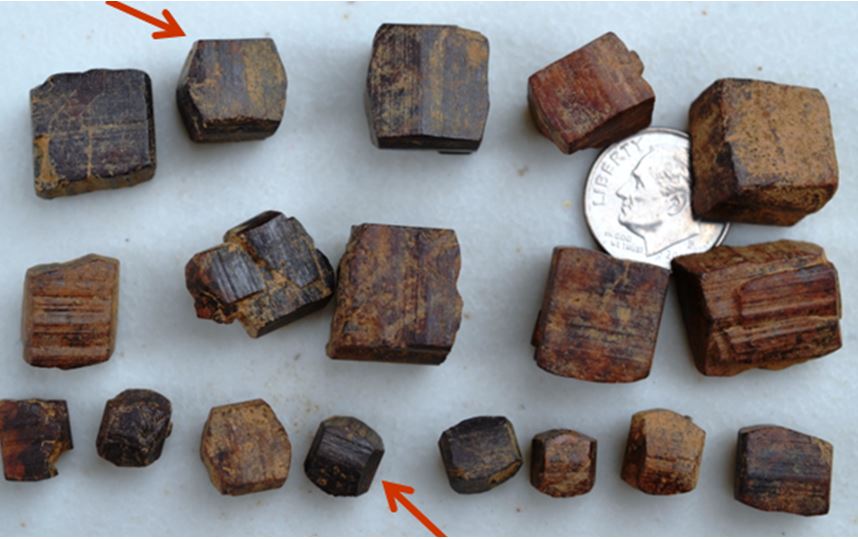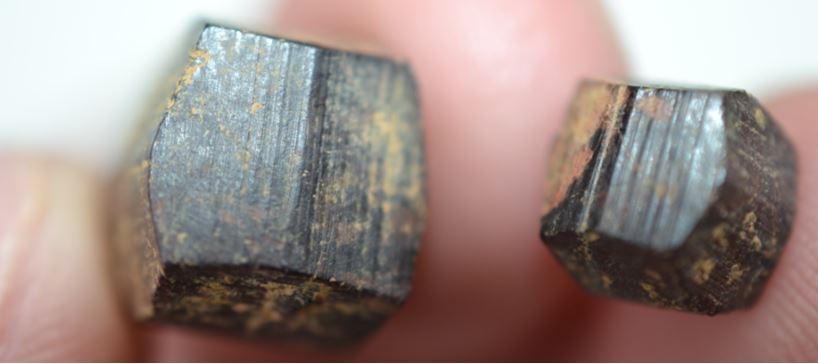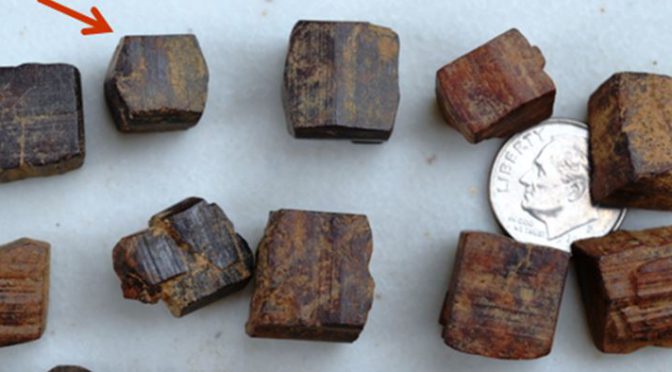On arrival the location does not look like a typical mineral collecting site. There are not any rocks to be seen. The GPS coordinates provided by Beard (2013) are smack in the middle of a cultivated field filled with small evergreen trees just off Fruitville Pike in Lancaster, PA. The field is flanked on two sides by subdivision housing and on a third side by a pair of little league baseball fields. Your first thought is that you botched the directions.

You will not need a hammer here. You won’t need boots or safety goggles and collecting in shorts is probably safe. In fact all you need are good eyes, a small sandwich bag for your finds, and perhaps a kneeling pad to allow closer visual contact with the objects you are seeking.
You will be looking for cubic-shaped forms in the soil/dirt. . They were pyrite crystals, but are now partially or completely replaced by goethite and limonite. Although the chemical composition has changed from iron sulfide mineral to iron hydroxide, many other aspects of the original mineral are preserved. Some are virtual cubes with 6 equal sides with minor rounding at the center of each face. Others show the characteristic rounded edges of pyrite and occasionally one can find a 12-sided pyritohedron with each side a five-side pentagon. Nearly all crystal faces show the characteristic striations found on pyrite. Admittedly they have lost their metallic luster, which does not help in their detection in the brown soil, but otherwise they look like little pyrite cubes.


The small crystals range in size up to about ¾” inch although most are ½” or smaller. They have weathered out of the Cambrian-age Ledger dolomite to arrive alongside bits and pieces of chert and quartz material in the soil. Because the field is cultivated and annually turned over new crystals are continually brought to the surface where they can be spotted by keen eyes.
This site is on private property. The owners live at the nursery in the upper right of the aerial photo. They generally allow visitors to walk the field and collect, but they do require you visit them first to seek permission. There may be times when they might limit collecting on certain parts of the field. Please be courteous and seek permission first.
Reference:
Beard, Robert, 2013, Rockhounding Pennsylvania and New Jersey, A Falcon Guide, site #7, page 42-44.
